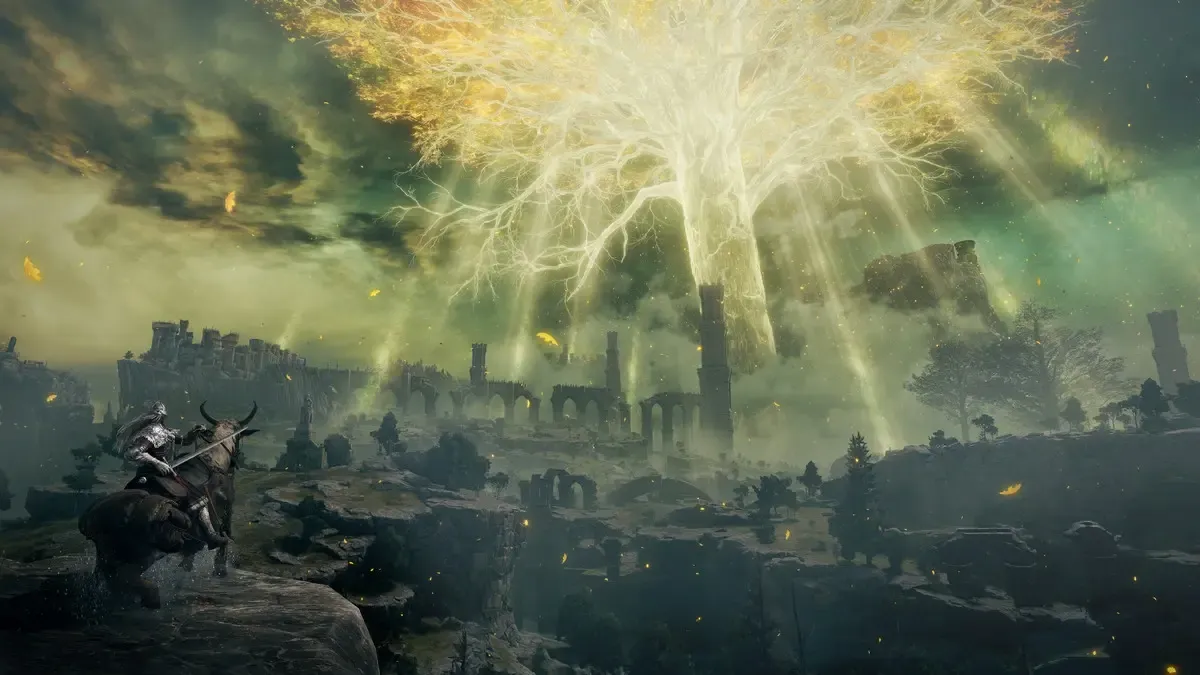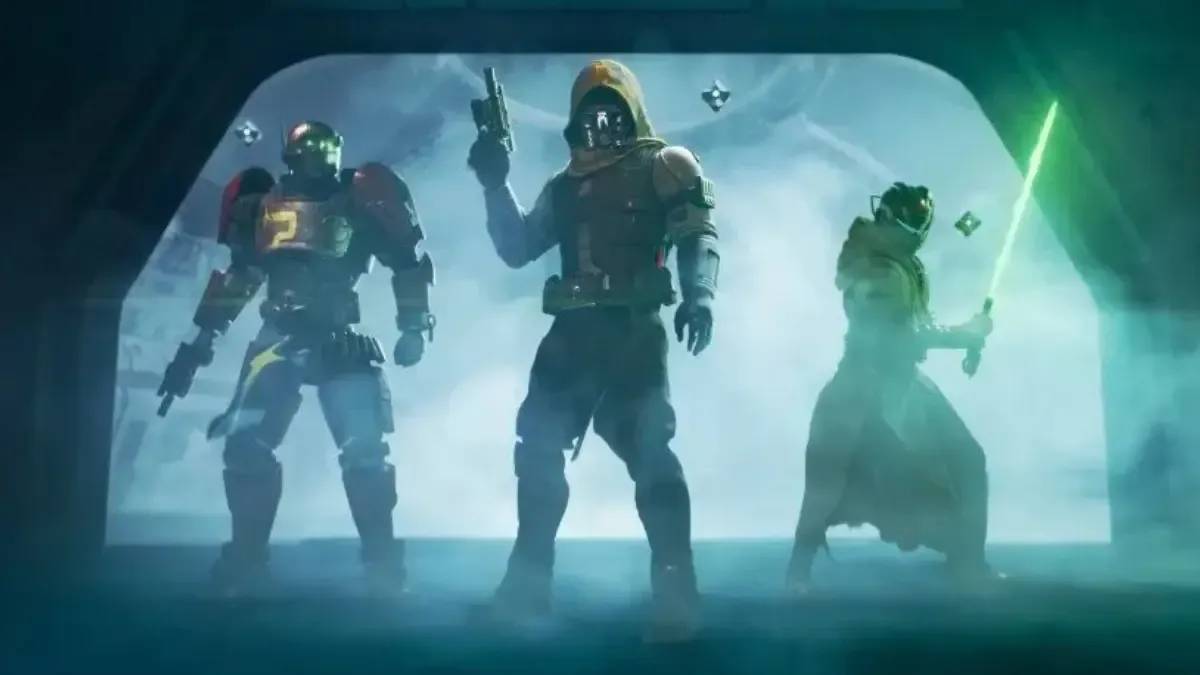Image: Shift Up
Stellar Blade’s dazzling visuals and engaging setpieces will impress any player, so long as they don’t wander off the beaten path.
The flashy action adventure game Stellar Blade almost looks too good to be true, coming from the new game studio Shift Up. Early trailers showed off its meaty combat, gnarly creature design and promising sci-fi setting, all of which seemed rather ambitious in scale for a debut game. The game’s skintight suit-clad protagonist and Sekiro: Shadows Die Twice-like combat allowed for no small amount of positive buzz to build up around its release this year, and an impressive early demo only seemed to seal the deal.
Now that the full game is close to release, do those early impressions hold up? We played through Stellar Blade over the last week, and our answer to that question is yes — with a few caveats to address first. Stellar Blade is a visually gorgeous adventure with interesting creature designs, fantastic music and dynamic combat. Where it falls short are its puzzlingly content-starved side quests, imprecise platforming and shallow characters. Fortunately, these things do little to dampen the appeal of its shockingly bleak story and titanic boss fights, which are worth experiencing on their own.
Game over, man
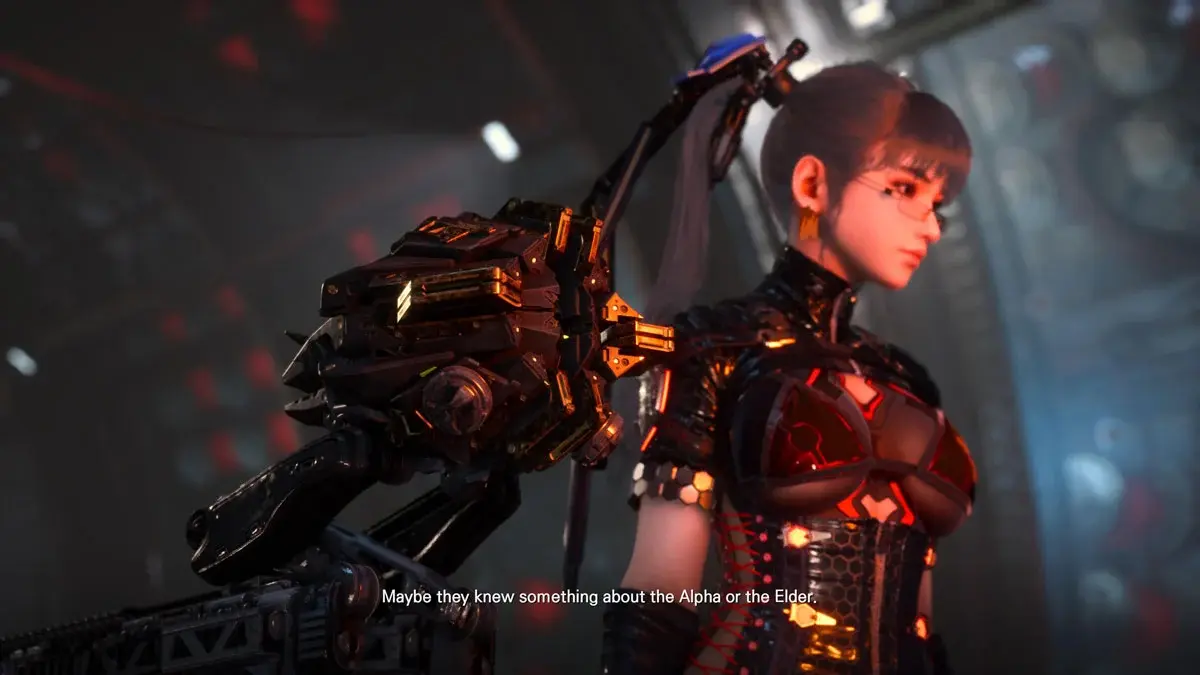
If you’ve played Stellar Blade’s demo, you’re already familiar with its basic premise: Planet Earth was decimated long ago by monsters called the Naytiba, ejecting the remnants of humanity to an outer space colony. The human colony sends the 7th Airborne Squad in retaliation, with warriors like the protagonist Eve filling its ranks, all the way down to Earth to destroy the Naytiba and reclaim Earth for humanity. As the squad arrives at the planet in dropship-like pods, however, most of Eve's team is slaughtered — leaving her stranded with a tough mission to bear on her shoulders alone.
After a rather violent prologue that leaves you lost and alone, Eve teams up with the few people she finds still scattered around Earth to pursue the Naytiba and slay them one by one. That mission takes her to new corners of this decimated planet, as she slowly uncovers both its hidden past and the faint spark of civilisation sprouting from its ashes.
So far, so Nier: Automata, and the game doesn’t feel any less Yoko Taro-influenced the further its story develops. Much like 2B, Eve has arrived at a dead planet she’s unfamiliar with, tasked with a mission given by an unseen regime located in the stars above. Besides the occasional walk-and-talk style story event between Eve and her companions, our strait-laced protagonist spends most of her time traversing different parts of post-apocalypse Earth on her lonesome — with a drone piloted by her friend providing endless exposition on how this world came to be.
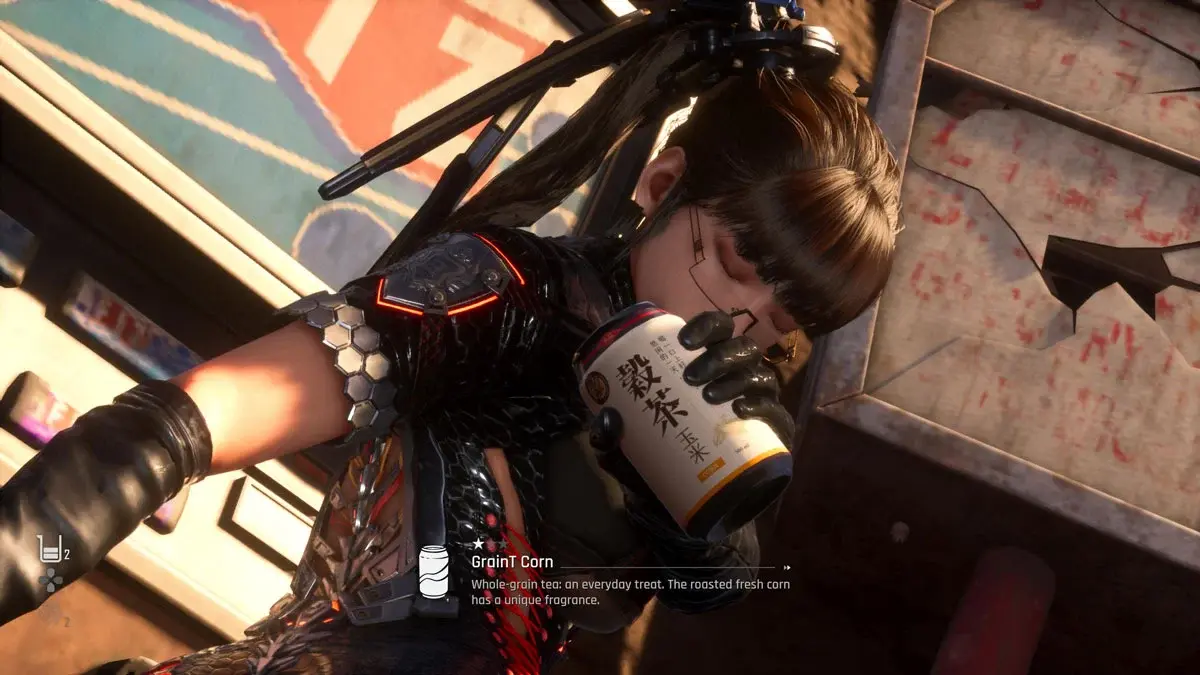
The similarities between Stellar Blade and Nier: Automata also extend to its fantastic soundtrack, whose soft choral harmonies and light melodies instil a pensive sense of peace as you traverse many of the game’s larger zones. It sounds a hell of a lot like Nier: Automata’s moody soundtrack and that’s likely because its composer, Keiichi Okabe’s music studio Monaca was involved in scoring this game's music. I also adored the rest music in this game, with three tracks available for players to cycle through while they upgrade Eve's gear, replenish her health and buy new equipment. I may have stopped at a rest point and got some vacuuming done a time or two, just because the music was so calming.
As far as its main story goes, a lot more attention has clearly been paid to worldbuilding than character writing here — which is unfortunate. This fallen version of Earth is like many we’ve seen before, littered with broken skyscrapers and rusted machinery, with only the game’s unique vision of futuristic technology providing it an aesthetic individuality. Some characters Eve meets during her quest, like the ever-bubbly engineer Lily, have colourful enough personalities to endear themselves to the player. Unfortunately, it's the nature of this game to be so self-obsessed with its own lore that little care is put into fleshing its cast and their motivations. They seemingly exist to just inform Eve of recent developments and tell her where to go next.
Eve herself is shockingly milquetoast. She’s a soft-spoken hero determined to save everyone she meets, though she does so with so little muster that it sometimes feels like she’s in a theatre play, monotonously reading her lines and going through the motions. We learn little about her likes and dislikes, her motivation and background, her odd quirks and personal history; to the point that she easily becomes the dullest member of the game’s cast. Her much talked about design has become the subject of such online debate that an entire Wikipedia article is needed to cover it, but it really feels like there should be more going for this protagonist than her looks.
Eve's combat abilities
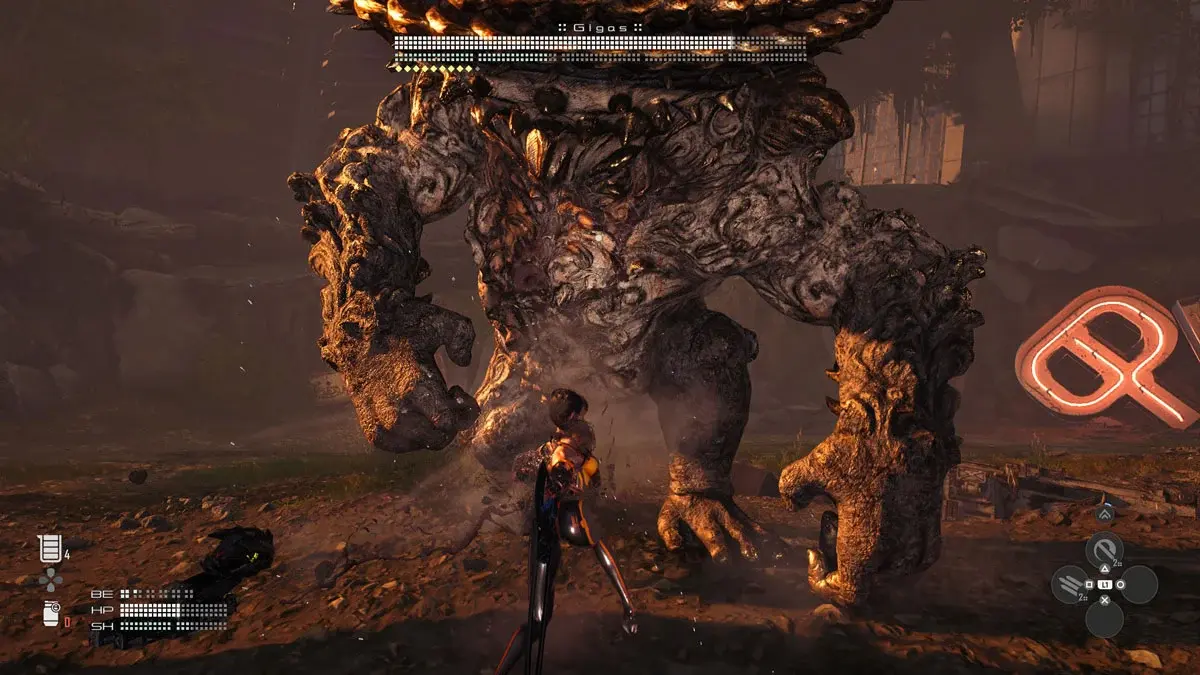
Stellar Blade’s combat is flashy and deep enough for players to sink their teeth into, even in its opening hours. The game wastes little time in throwing players into battle and introducing them to Eve’s skill tree, which allows her to unlock new weapon abilities and combos. Eve is an agile fighter who relies on dodges and parries to get through a fight, so the comparisons between this game’s combat system and Sekiro: Shadows Die Twice’s aren’t too far off. Sekiro just executes it a lot better.
It’s not that this game’s combat is more shallow than its peers, it’s that it doesn’t feel nearly as tight and fluid as it should be. The dodge button is the best example of this. Many enemy attacks cannot be countered or parried, only dodged, but Eve’s dodge only allows her to do a little hop away from the enemy at a time. You can eventually unlock a ‘double dodge’ in her skill tree but still find it insufficient to avoid wide-sweeping attacks. I also ended up using Eve’s special abilities more often than intended, due to the existing button mapping tying them to her parry.
The game also allows you to stagger enemies by throwing them off balance if you can frequently parry and dodge their attacks. This makes it so that most enemies can easily be stun-locked the second you figure out their move sets. Even some of the game’s bosses don’t pose a challenge if you can counter a few attacks in a row, leading to big fights that end disappointingly quickly. However, its lack of a posture meter keeps you from knowing how close an enemy is to getting down, which makes the whole balance system seem unintuitive in motion.
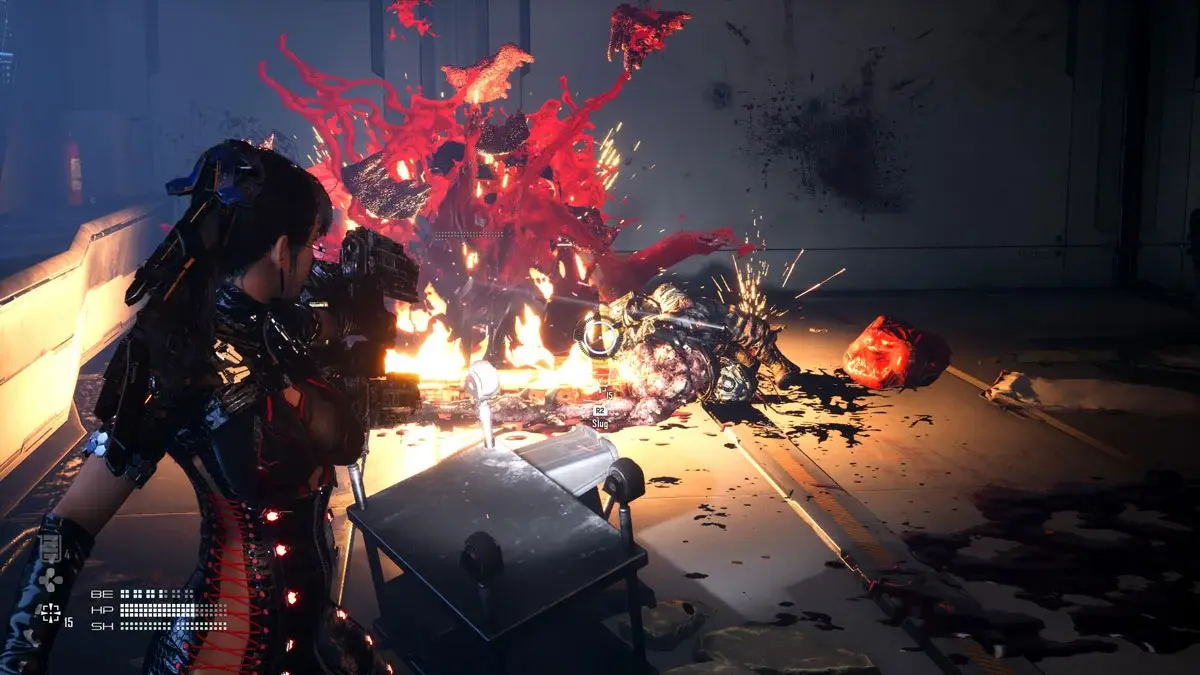
Checkpoints are also plentiful in all the game’s areas — though you might have to undertake a side quest just to turn them on — so you’ll never feel too frustrated after sudden defeat. Slain enemies generously award Eve with plentiful amounts of XP, allowing you to grind through as many levels as you like before moving on to the next challenge. The game’s combat also opens up much more after Eve traverses through the first two areas, giving the player access to a drone gun and more to deal with future threats. In short, you’ll have a lot of fun with Stellar Blade as an action game if that’s what you’re looking for, but don’t expect complexity of the likes of Devil May Cry.
Thankfully, the game runs absolutely flawlessly on the PlayStation 5 with three performance modes that either give you a higher frame rate, a higher resolution, or a balance between the two. I played mostly on Balanced Mode and didn’t run into any frame rate drops or graphical hiccups whatsoever — something that’s become a sad rarity for games of this scale at launch.
The next objective is always a hop, skip and a jump away
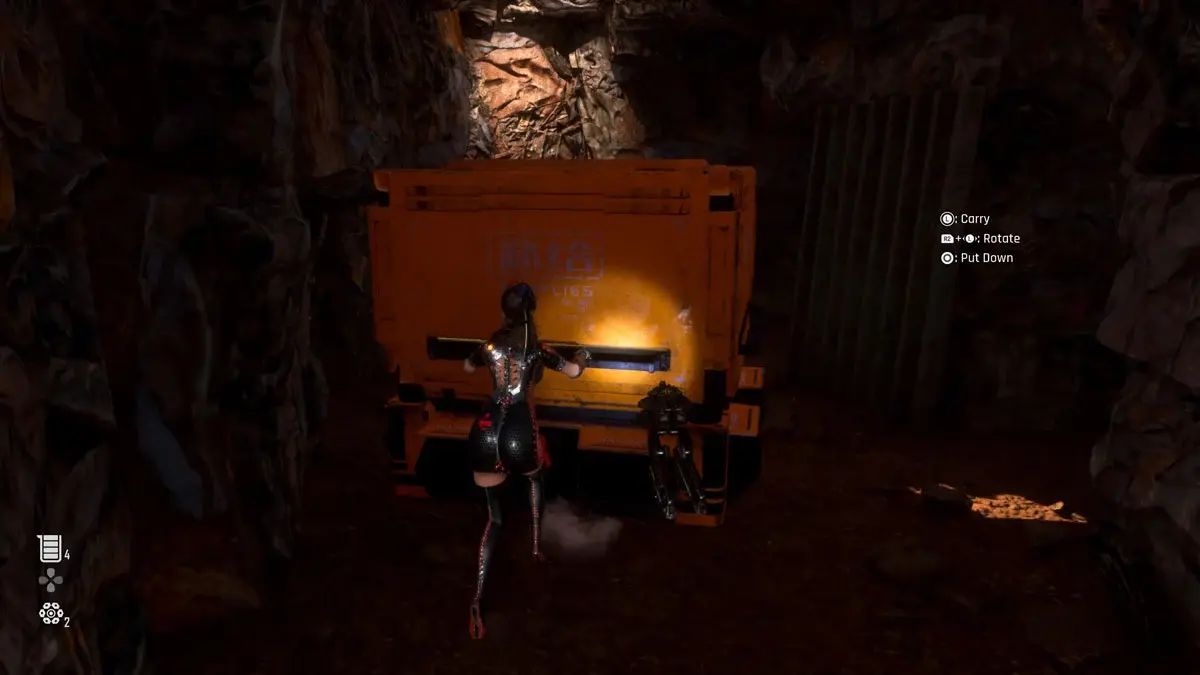
I’ve written at length about Stellar Blade’s combat being unintuitive at times, but I do want to reiterate that this rarely got in the way of my fun. The game’s electrifying boss fights, coupled with Eve’s array of abilities and weapons, make for a largely good time — but I can’t say the same about its level design and traversal. Stellar Blade's zones can be divided into two categories: linear story-driven levels and larger, more open-ended environments. The former will mostly see Eve solve puzzles and fight enemies in a series of dressed-up corridors. The latter is geared towards exploration, giving players the option of pursuing the main questline or several side activities instead.
The semi-open world environments offer a nice breather from the linear exposition-heavy story events which precede them, but the activities they offer seem hilariously half-baked. In the hub world of Xion, players can pick up sidequests from townsfolk in need of help, and tick off these quests in and out of town. The game doesn’t even have the decency to pretend that these quests are anything more than meaningless filler meant to deliver XP and upgrade materials to the player. There’s no story content here — you’ll be asked to go investigate something on the map, click a button and teleport back to the bulletin board for rewards.
I’ll give you an example: one of these quests gave Eve the task of searching for a missing cat in town. A location was marked on my map for investigation, I walked over to it, and imagine my surprise when I found a cat’s dead corpse at the marker. Eve blithely remarks that the cat is no good to anyone now, the game asks me to teleport back to the bulletin board, and that’s the end of the quest. Granted, other physical NPCs scattered around the map will have their own problems for Eve to solve, and theirs are a tad meatier. You’ll get more dialogue from these, but they do mostly boil down to fetch quests too.
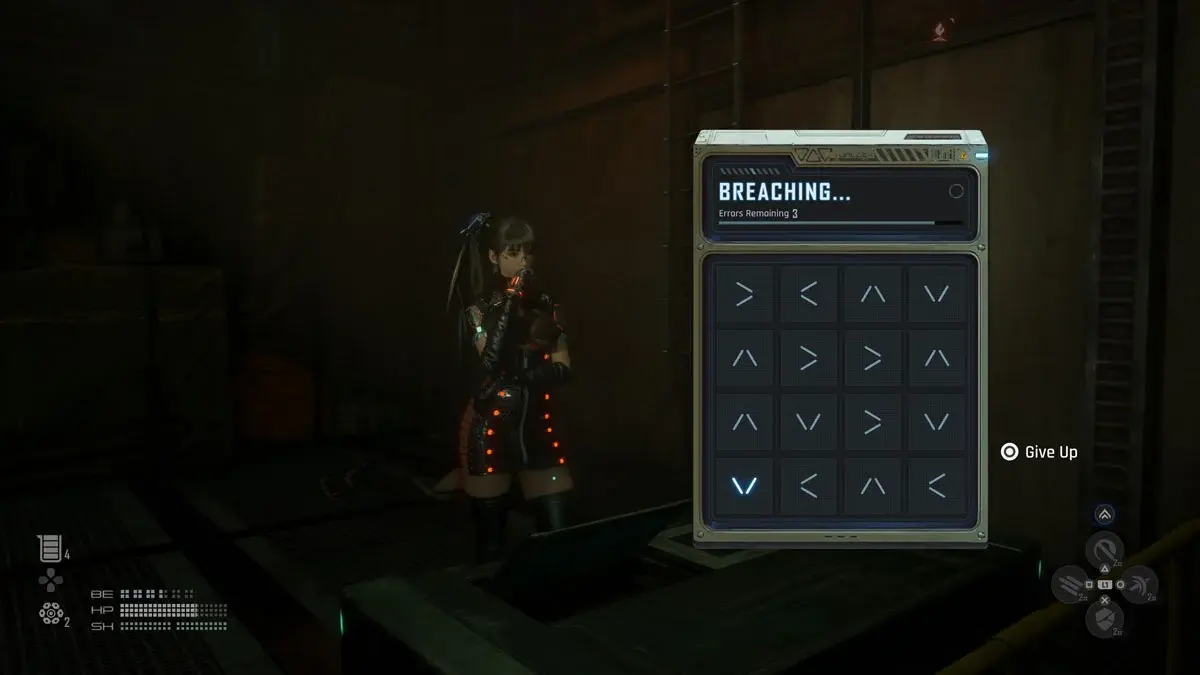
On one hand, these side quests are so rote and unimaginative that I’d recommend skipping them entirely. On the other hand, they’re so mindlessly easy to complete that you might as well squeeze them for all the rewards they’re worth. To me, the main sticking point is that these quests lead you back into the game’s platforming sections, and they can be a real pain to deal with. Uncharted, this is not — Eve will have to swing on ropes, climb up ladders and scale cliff sides, but the platforming required for all these actions are annoyingly imprecise. Many times, I would fail platforming sections by short-jumping when I meant to long-jump, or pulling the trigger in one direction only for Eve to walk off a cliff.
There’s also a ridiculous amount of backtracking needed for these platforming segments, without any shortcuts given to easily get back to where you came from. I found that falling off a tower and respawning at the bottom was much faster than actually climbing all the way back down, so make of that what you will.
Verdict
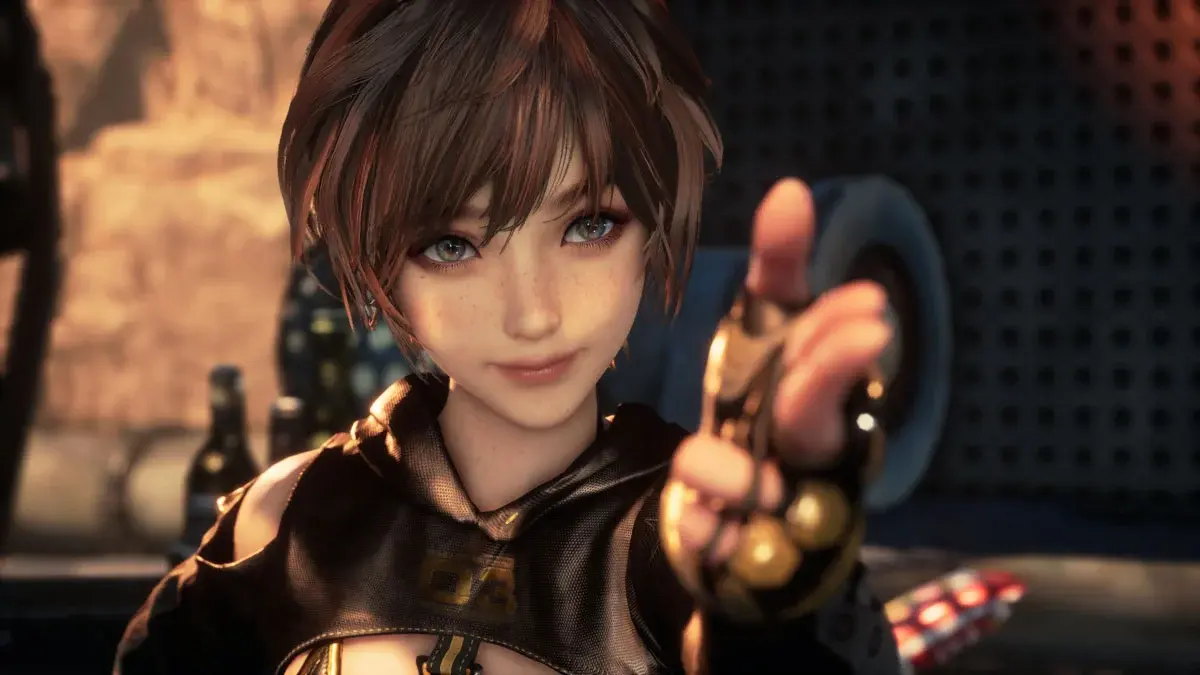
There is quite a bit of jank you’ll have to sift through to enjoy Stellar Blade for what it is: a fine action game with fantastic visuals and exhilarating set pieces. The game’s combat is as flashy as its over-the-top character designs, giving players plenty of tools to dismantle the Naytiba’s occupation of Earth — and uncover the true nature of Eve’s mission in doing so.
I only wish the game’s side quests, characters, and platforming were given the same level of depth as its combat. Still, Stellar Blade is a great debut from a new game studio like Shift Up, and definitely worth picking up for anyone itching for more of Sekiro’s parry-heavy combat and Nier: Automata’s melancholic atmosphere. Both games might be superior to this one, but at least this one gives you a bit of both in a very polished package.


